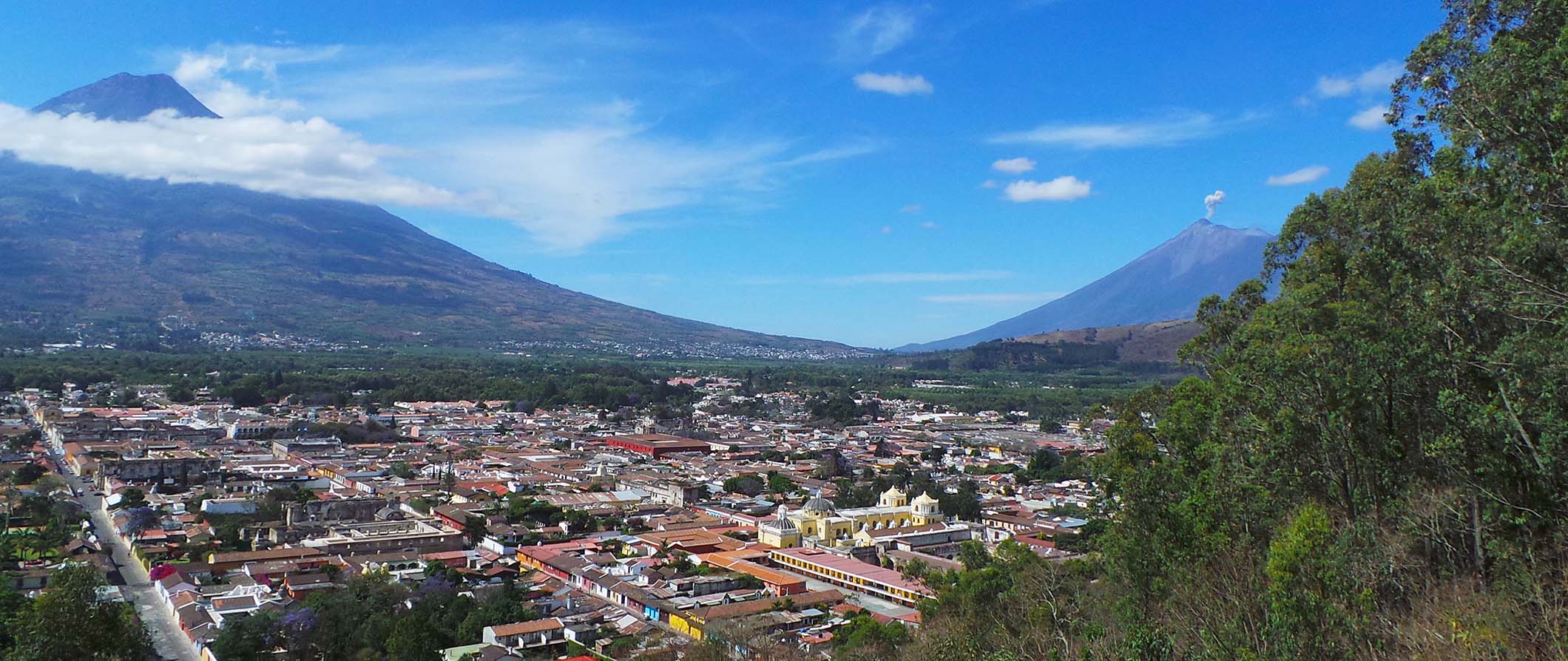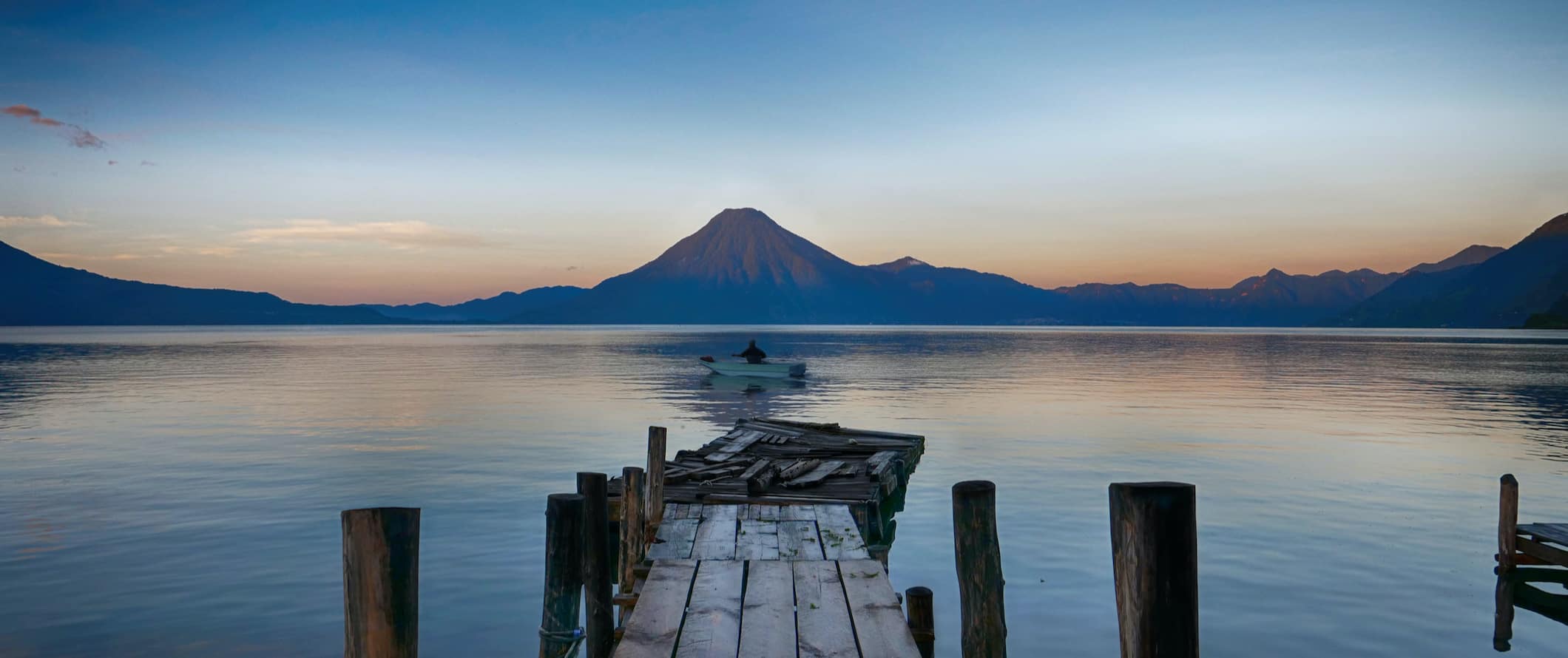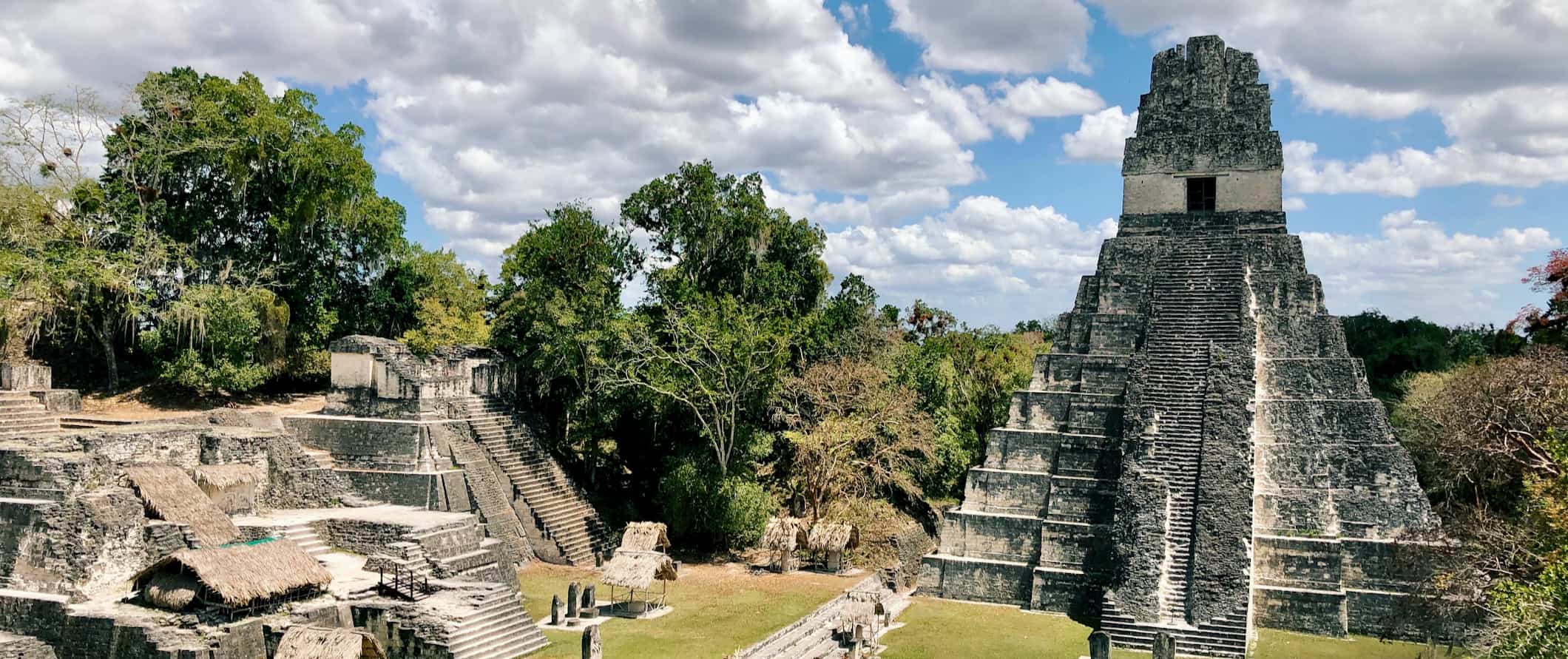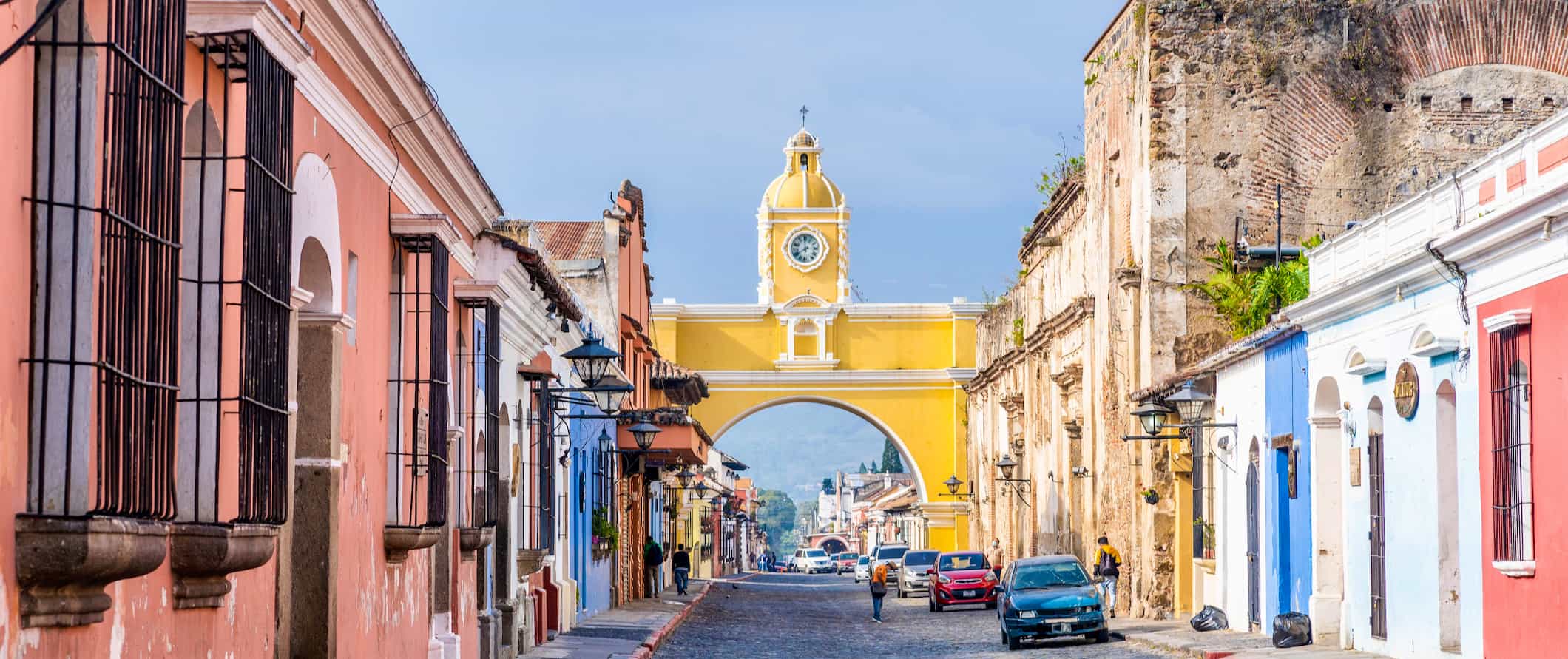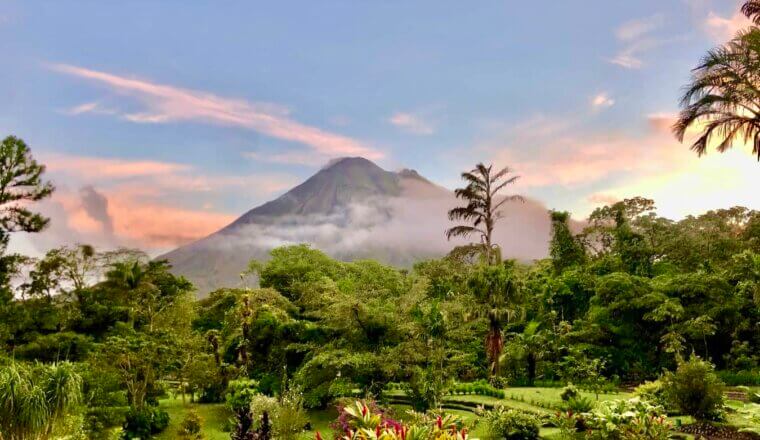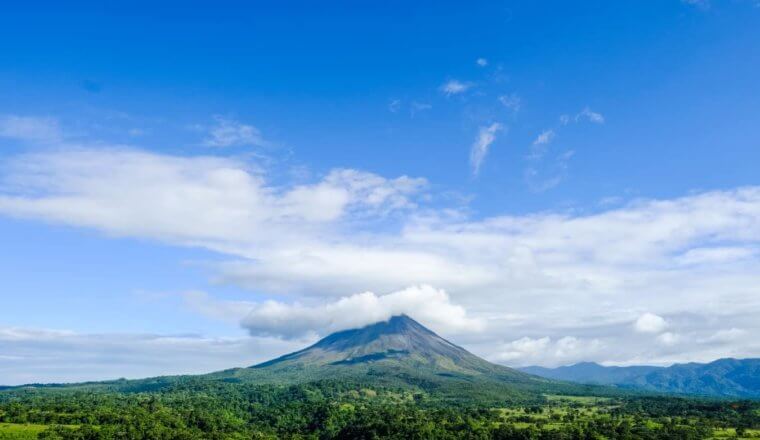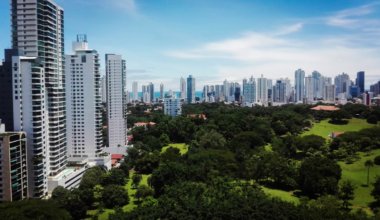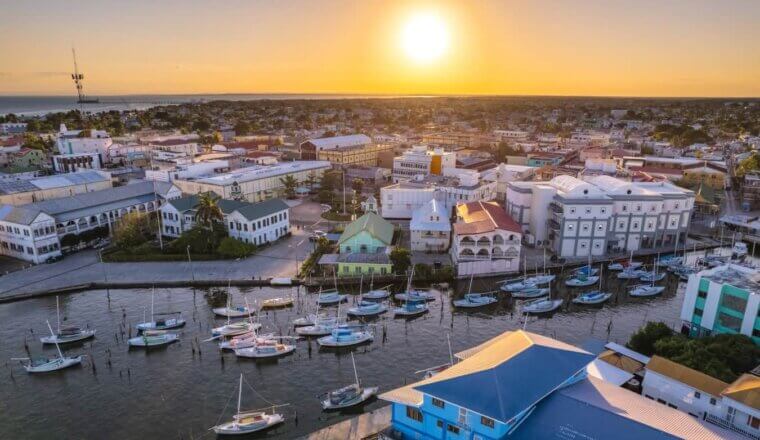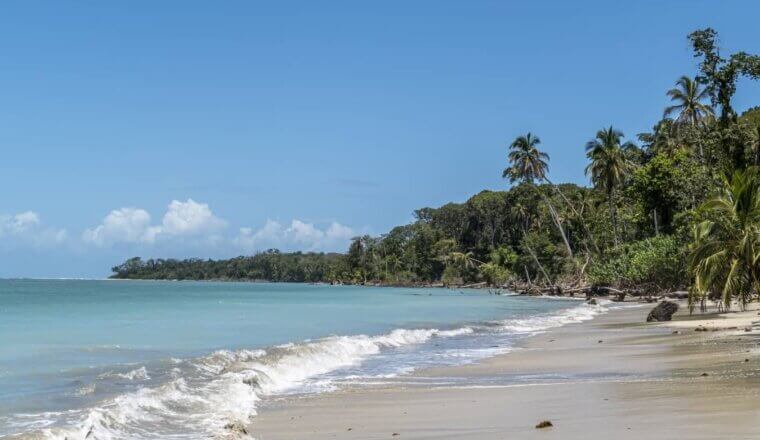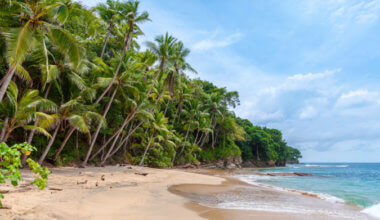Guatemala is the Mayan heart of Central America. Home to ancient historical sites and incredible ruins, dense jungles, colorful architecture, lively markets, and towering volcanoes, Guatemala is a diverse and beautiful country ripe for budget travel.
The rugged mountains and jungles offer adventurous travelers a chance to get off the beaten path and explore pristine landscapes for a fraction of what you’d pay elsewhere in the world. And the ruins are underrated and a must-see for history buffs, including the impressive Tikal, an ancient Mayan city and a UNESCO World Heritage Site.
I love this country and have always had an incredible time here. (One of my favorite memories involves camping in Tikal National Park)
In this travel guide to Guatemala, I’ll show you how to make the most of your trip, save money, and stay safe in one of Central America’s most popular destinations!
Table of Contents
Top 5 Things to See and Do in Guatemala
1. Visit Lake Atitlán
This spectacular lake is actually a massive volcanic crater. The lake sits 1,500 meters (4,921 feet) above sea level and is also one of the deepest lakes in Central America. It should come as no surprise that it’s one of the best spots to watch the sunset in Guatemala. On the northern coast of the lake lies the tourist village of Panajachel, a good base to arrange lake and volcano tours (there are two volcanoes here you can explore, Toliman and San Pedro). The village offers incredible views of the surrounding volcanoes and you can also enjoy restaurants, bars, and nightlife in a rustic lakeside setting here too. Boat tours are available as well.
2. Head to Antigua
Antigua is a picturesque colonial city in a highland valley between three volcanoes. It’s full of colonial Spanish architecture, including cobbled streets, what’s left of the centuries-old San Francisco church, houses, and ruins. There’s a vibrant market with colorful Guatemalan blankets and fabrics as well as lots of crafts and souvenirs. Head to the Plaza Mayor to take in the city’s amazing garden and don’t miss a hike up the Fuego volcano (which is active). There are two routes to choose from: La Soledad and the super high, extremely steep Alotenango Route. Conversely, you can hike the difficult (yet super popular) Acatenango volcano, which offers well-earned views of Fuego spitting lava, fire, and ash into the air. The best time for these hikes is during the dry season from the end of November to early April.
3. Explore Tikal National Park
Tikal is home to the most popular Mayan ruins in the country. Located in Petén Province in the north of Guatemala, this enormous national park is a UNESCO World Heritage Site and spans nearly 600 square meters (6,500 square feet), housing centuries of Mayan history and archeology covered in lush vegetation. It is famous for rare animals like pumas, toucans, snakes, monkeys, and many species of birds. Arrive early and stay late as the park empties out in the afternoon when tour groups leave. I also recommend sleeping over in the park to catch the sunrise. You will need to pay extra for a guided tour if you want to see the sunrise or sunset. Ticket prices vary depending on if you buy day tickets, sunrise tickets, or sunset tickets. Admission is 150 GTQ for day hiking before sunset. You can reach Tikal from Flores by shuttle bus or even from neighboring Belize.
4.Visit Semuc Champey
This natural attraction outside the town of Lanquin near Coban consists of 300 meters (984 feet) of limestone bridges over the Cahabòn River that form natural lagoon-like pools. Take a candlelit tour through the Kamba caves, go tubing down the Cahabòn, or swim in the turquoise pools along the bridge. Keep in mind that the caves can only be visited with a guide. It’s possible to get here with local transport, private shuttles, or on a day trip. Go early in the morning to beat the crowds. To avoid getting rained on or risk that the area is flooded, visit during the dry season (December-April). Day trips cost 250-300 GTQ.
5. Explore the Chichicastenango Market
Most people who come to Guatemala visit Chichicastenango, the largest indigenous market in North America. Every Thursday and Sunday, thousands of Quiché Mayans come to town to buy and sell handicrafts, flowers, poetry, trinkets, pottery, and colorful textiles. There are plenty of places to eat tasty street food and buy local fruits and veggies, try fresh juices or Guatemalan coffee, and buy delicious handmade tortillas. Don’t forget to bring smaller bills and remember to bargain for the things you buy. Go early in the morning to beat the crowds.
Other Things to See and Do in Guatemala
1. Visit the National Museum of Archaeology and Ethnology
Located in Guatemala City, this museum houses the many artifacts uncovered from the Mayan archaeological sites around the country. Created in 1898, the museum holds over 20,000 items and artifacts and is a good place to visit so you can learn more about the Mayan culture. Admission is 60 GTQ.
2. See the Yaxha ruins
If Tikal is too touristy for you, consider the more secluded Yaxha ruins. Like Tikal, Yaxha is a massive Mesoamerican archaeological site. Located in the northeast, it was the third-largest Mayan city in the region. Home to several huge stone pyramids, the site was “discovered” in 1904 and dates to 250-600 CE. Spend a few hours looking at ancient drawings and intricately carved hieroglyphs. Admission is 80 GTQ.
3. Explore Quirigua
The archaeological site of Quirigua, located in the southeastern corner of the country near the border with Honduras, contains the largest stelae (upright stone columns covered in drawings or carved into shapes) ever discovered in the Mayan world. Nine stelae are arranged around a central plaza, accompanied by altars carved into zoomorphic shapes that date from the 2nd-8th centuries CE. Although the stelae are unrestored, they are a magnificent sight; the largest of these is a whopping 25 feet tall! Admission is 80 GTQ.
4. Hike the Volcán de Pacaya
This active volcano frequently erupts ash clouds over Antigua, however, it makes for a fun day hike (don’t worry, it’s safe). The trail is relatively easy (it’s not that steep) and takes around two hours to hike, giving you lots of time to admire the view before you actually get a chance to peer into the volcano’s cone. Pacaya can only be accessed with an authorized guide so you will need to book a tour. Be aware the cheap tours often just offer transportation and a Spanish-speaking guide. If you don’t speak Spanish you will need to ask for an English-speaking guide. Guided hikes start at 250 GTQ. Some of the tours also include a visit to a thermal spa where you can soak in the naturally warm waters as well as a chance to roast marshmallows over the volcano.
5. Wander Flores
A small island, Flores sits on Lake Peten Itza, a large lake in the north and the second-largest lake in the country. A narrow man-made causeway connects the island to the mainland and the region is perfect for hiking, swimming, and spotting wildlife. From here, you’re just a short drive away from some of the most untamed jungles in the country (it makes for a good base for exploring the nearby jungles). It’s also close to the ruins at Tikal.
6. Visit the ruins at El Mirador
El Mirador is one of the most undiscovered Mayan sites in Guatemala. Located near the border with Mexico in the northeast, the majority of its complexes lie in the depths of the jungle and remain relatively inaccessible to tourists. It’s the largest of all the Mayan ruins, rivaling even the pyramids in Egypt in size. Though discovered in 1926, researchers didn’t start studying it until 2003! Multi-day tours cost around 2,300-3,100 GTQ since it’s so remote.
7. Explore Rio Dulce
Rio Dulce is a gorgeous river and popular backpacker destination in eastern Guatemala. Two towns, El Relleno and Fronteras, lie on either side of the river and are connected by one of the largest bridges in Central America. The area is famous for its trekking and water activities, including the Finca Paraiso hike, which leads to a hot spring and a waterfall. The Quiriguá ruins (mentioned above) are also nearby and worth a visit.
8. Visit the Antigua Market
This sprawling market is colorful and somewhat chaotic. It’s open-air and filled with everything from fruits and vegetables to handmade crafts and poultry to fake DVDs and knock-off jeans. Come here to buy souvenirs, people watch, and take in the bustling chaos!
9. Relax at Monterrico
This is the most popular beach in the country. Located close to Guatemala City and Antigua, this laid-back beach town is a relaxing place to catch some sun and hit the waves. Between June-December, you can also see giant leatherback, green sea, and smaller olive ridley turtles. There are also lots of tours of the nearby mangroves.
10. Hike Acatenango
Located near Antigua, Acatenango is a stratovolcano standing almost 4,000 meters (13,000 feet). It’s the third-highest volcano in Central America and last erupted in 1972. It offers a strenuous 7-8-hour hike up to a campsite, where you camp overnight before summiting to watch the sunrise. Overnight hiking tours cost around 600-800 GTQ and include cold-weather gear, an English-speaking guide, and park admission.
11. Watch the sunrise from Indian Nose
The sunrise from the Indian Nose volcano is quite possibly one of the most magical sunrises you will ever experience. Located next to Lake Atitlan, you’ll get to look out across the water and the magnificent volcanoes before you (including the Atitlán and San Pedro volcanoes). You can do this hike alone but it is difficult finding the path in the dark so it is much better to go with a guide. Expect to pay around 465 GTQ.
12. Learn to surf
Guatemala isn’t known for its beaches but the small coastal town of El Paredon is a well-kept secret where you can hit the waves. The black sand beach is beautiful and the surf is great. A board rental is around 100-125 GTQ per day and surf lessons cost around 120 GTQ for a private class, including a board.
Guatemala Travel Costs
Accommodation – Beds in a 6-8-bed dorm start at 60 GTQ. Private rooms cost around 140-300 GTQ. Free Wi-Fi is standard and some hostels also offer free breakfast. Not many hostels have a kitchen so be sure to check first if you want to prepare your own meals.
Budget hotels are plentiful in Guatemala and rooms cost as little as 235-250 GTQ for a double or twin bed with basic amenities. For a mid-range hotel with free breakfast, expect to pay closer to 500 GTQ
Airbnb is available around the country, with private rooms starting at 200 GTQ per night. For an entire home or apartment, prices begin around 300 GTQ per night though they average closer to 800 GTQ. Book early to find the best deals.
For those traveling with a tent, camping is not common and not recommended. You can camp in the parks of El Paredon and Tikal though. Camping there costs around 50 GTQ per night.
Food – Guatemalan cuisine leans heavily on traditional Mayan foods with a strong influence from Spain (the Spanish arrived here in 1524). Traditional foods use a lot of corn, chilies, avocados, and beans. Popular dishes include tamales, seafood soup, and meat stews (usually chicken or beef), which are readily available and usually quite affordable. Gallo en perro (spicy stew), tapado (seafood soup with green plantain and coconut milk), and fried rice are other popular dishes.
If you’re on a budget, you can get a large meal of beans, rice, corn, and meat for around 40 GTQ from a comedor (local eateries that usually offer large portions). Another local favorite is a tortilla with beans and eggs with sour cream and fried plantain on the side, which usually cost the equivalent of just a couple of dollars.
Lunch is the main meal of the day here, and many restaurants offer affordable set menus. These usually include soup and grilled meat.
Pre-made plates of food (usually chicken or beef, rice, and tortillas) are often sold on the buses during stops for about 25-30 GTQ. Street food, like hot dogs or tamales, can be found for less than 15 GTQ.
A three-course meal in a mid-range restaurant with a drink costs around 250 GTQ. Mexican-style dishes like tacos or enchiladas are a popular evening choice (since dinner is usually a lighter meal).
Fast food like McDonald’s costs around 45 GTQ for a combo meal. For a meal at a Western restaurant (think burger and fries or pizza), expect to pay at least 100 GTQ.
A beer costs 15 GTQ, bottled water is 6 GTQ, and a cappuccino/latte costs around 19 GTQ.
If you plan on buying your own groceries, expect to pay around 200 GTQ per week for staples like vegetables, rice, seasonal produce, and some meat.
Backpacking Guatemala Suggested Budgets
As a budget backpacker in Guatemala, expect to pay around 250 GTQ per day. This assumes you’re staying in a hostel dorm, cooking most of your meals, sticking to free activities (like hiking and the beach), limiting your drinking, and using public transportation to get around.
On a mid-range budget of 650 GTQ, you can stay in an Airbnb, eat out for all your meals, enjoy a few drinks, take some guided tours, use taxis here and there, and visit more attractions such as museums or ruins.
On a “luxury” budget of 1,750 GTQ per day, you can stay in a hotel, take taxis everywhere, book higher-end tours (including private tours and day tours), and eat out every meal at nicer restaurants. This is just the ground floor for luxury though. The sky is the limit!
Guatemala Travel Guide: Money-Saving Tips
It’s easy to save money while traveling in Guatemala since the country isn’t that expensive. However, a good budget traveler always looks for ways to maximize value. Here are some of the best ways to save money in Guatemala:
- Take a free walking tour – In some of the larger cities (like Antigua) you can find free walking tours. They’re the best way to get introduced to a new destination. Freetour.com has options you can choose from. Just be sure to tip your guide at the end!
- Stay with a local – While accommodation is cheap here, staying with a local via Couchsurfing makes it free. Not only will you save some money, but you’ll get firsthand knowledge from a local!
- Visit the Mercado – Although eating out is cheap in Guatemala, it makes sense to shop at the markets for your food to take on day trips or to prepare at your hostel. Fruit costs mere pennies and everything is always fresh.
- Eat street food – The local street food is the cheapest food you can eat — and the tastiest. Stick to street food when it comes to eating out.
- Avoid flying – Bus rides are longer, but if you are trying to see the country on a budget you shouldn’t fly. An hour-long flight can cost hundreds of dollars. Avoid flying as much as possible!
- Avoid drinking – Sure, the beer here is cheap but a couple of beers every day will add up. Watch your drinking to keep your budget intact!
- Bring a reusable water bottle – The tap water here isn’t safe to drink so bring a reusable water bottle with a filter. LifeStraw has a built-in filter so you can ensure your water is always clean and safe to drink.
Where to Stay in Guatemala
Guatemala has plenty of hostels in all the major cities. Here are some of my suggested places to stay:
- Maya Papaya (Antigua)
- Barbara’s Boutique Hostel (Antigua)
- La Iguana Perdida (Santa Cruz, Lake Atitlan)
- Casa de Grethel (Flores)
- Hostal Los Lagos (Guatemala City)
- Hostal Guatefriends (Guatemala City)
How to Get Around Guatemala
Public transportation – The main method of transportation in Guatemala is las camionetas (“chicken buses”). They are old school buses from North America and are the most inexpensive way to get around. Expect to pay around 10 GTQ for a 1-2 hour journey. Shorter journeys can cost as little as 5 GTQ.
If you are traveling between places like Antigua and Lake Atitlan, shuttle buses are the most common form of transport for backpackers. Travel between Antigua and Guatemala City costs around 150 GTQ on a shuttle bus. On a chicken bus, it costs considerably less.
Train – There are no trains in Guatemala.
Bus – Because of the poor condition of the roads in Guatemala large coach buses aren’t available on many routes. You can find night buses between Guatemala City and Flores to take you to countries like Mexico, Belize, and Nicaragua. For most other places, you have to rely on shuttle buses.
You have two options for booking: asking in your hostel to call and book for you and pay in cash, or booking online through guatego.com. Unfortunately, websites like Busbud don’t operate in Guatemala as their transport infrastructure is still developing.
Keep in mind the shuttles are pretty basic. Most don’t have working AC and are not very spacious. Plan for delays as well.
Flying – There are regular flights from Guatemala City to Flores, usually costing around 1,000-1,400 GTQ per person for the one-hour flight. If you are short on time and have plenty of money to spend, I suggest flying. But for most travelers, the bus is the best option.
Car rental – Renting a car costs around 175 GTQ per day. Do take care if you decide to drive in Guatemala as the roads aren’t the best and landslides are common during the rainy season (which can often result in both accidents and road closures). Make sure you have an International Driving Permit (IDP) — you’ll need one for any car rental.
For the best car rental prices, use Discover Cars.
Hitchhiking – Hitchhiking is not common in Guatemala and not recommended for safety reasons. For more information, visit HitchWiki.
When to Go to Guatemala
Guatemala is a fantastic place to visit at any time of the year because of its spring-like climate. As many places are at altitude, you can expect cool mornings and evenings and warm days. Expect temperatures to sit between 18-28°C (65-82°F).
Many choose to avoid Guatemala during the rainy season (May-September) as the rain can be a bit disruptive, especially if you want to do things like hiking. That said, it is during these months that Guatemala is at its most beautiful as the country turns green and the flowers bloom. Prices also drop significantly during the rainy season.
To beat the crowds, visit in the shoulder season (the start or end of the rainy season). You’ll see fewer people and things will be a little cheaper. The weather won’t be perfect but it will still be sunny and warm most days so you’ll still be able to hike.
How to Stay Safe in Guatemala
While Guatemala is generally safe, there’s no denying that certain precautions should be taken as there is a lot of petty crime (and other safety issues) in the country. Avoid isolated areas, especially at night and in big cities. Keep your personal belongings on you while using public transit (especially chicken buses) and night buses.
Additionally, don’t wear flashy jewelry or leave your valuables out in the open. Petty theft is common here so you must be vigilant.
Violent attacks against tourists are rare. Most of the time it’s because the tourist was involved in something drug-related or was where they shouldn’t be at night.
Scams are common in the larger cities so be wary of any overly friendly strangers. You can read about common travel scams to avoid right here.
Solo female travelers should generally feel safe here, however, the standard precautions apply (never leave your drink unattended at the bar, never walk home alone intoxicated, etc.). Whenever possible, share a taxi with friends and avoid walking around alone just to be safe.
Guatemala is home to 37 volcanoes so volcanic activity isn’t uncommon. Be sure to check for warnings before you embark on any hikes/activities (especially ones on or around volcanoes).
Additionally, due to its political instability, protests and demonstrations are common. If one is occurring near you, simply head back to your accommodation and avoid taking part.
If you experience an emergency, dial 110 for assistance.
The most important piece of advice I can offer is to purchase good travel insurance. Travel insurance will protect you against illness, injury, theft, and cancellations. It’s comprehensive protection in case anything goes wrong. I never go on a trip without it as I’ve had to use it many times in the past. You can use the widget below to find the policy right for you:
Guatemala Travel Guide: The Best Booking Resources
These are my favorite companies to use when I travel. They consistently have the best deals, offer world-class customer service and great value, and overall, are better than their competitors. They are the companies I use the most and are always the starting point in my search for travel deals.
- Skyscanner – Skyscanner is my favorite flight search engine. They search small websites and budget airlines that larger search sites tend to miss. They are hands down the number one place to start.
- Hostelworld – This is the best hostel accommodation site out there with the largest inventory, best search interface, and widest availability.
- Booking.com – The best all around booking site that constantly provides the cheapest and lowest rates. They have the widest selection of budget accommodation. In all my tests, they’ve always had the cheapest rates out of all the booking websites.
- Get Your Guide – Get Your Guide is a huge online marketplace for tours and excursions. They have tons of tour options available in cities all around the world, including everything from cooking classes, walking tours, street art lessons, and more!
- SafetyWing – Safety Wing offers convenient and affordable plans tailored to digital nomads and long-term travelers. They have cheap monthly plans, great customer service, and an easy-to-use claims process that makes it perfect for those on the road.
- LifeStraw – My go-to company for reusable water bottles with built-in filters so you can ensure your drinking water is always clean and safe.
- Unbound Merino – They make lightweight, durable, easy-to-clean travel clothing.
- Top Travel Credit Cards – Points are the best way to cut down travel expenses. Here’s my favorite point earning credit cards so you can get free travel!
Guatemala Travel Guide: Related Articles
Want more info? Check out all the articles I’ve written on backpacking/traveling Central America and continue planning your trip:
